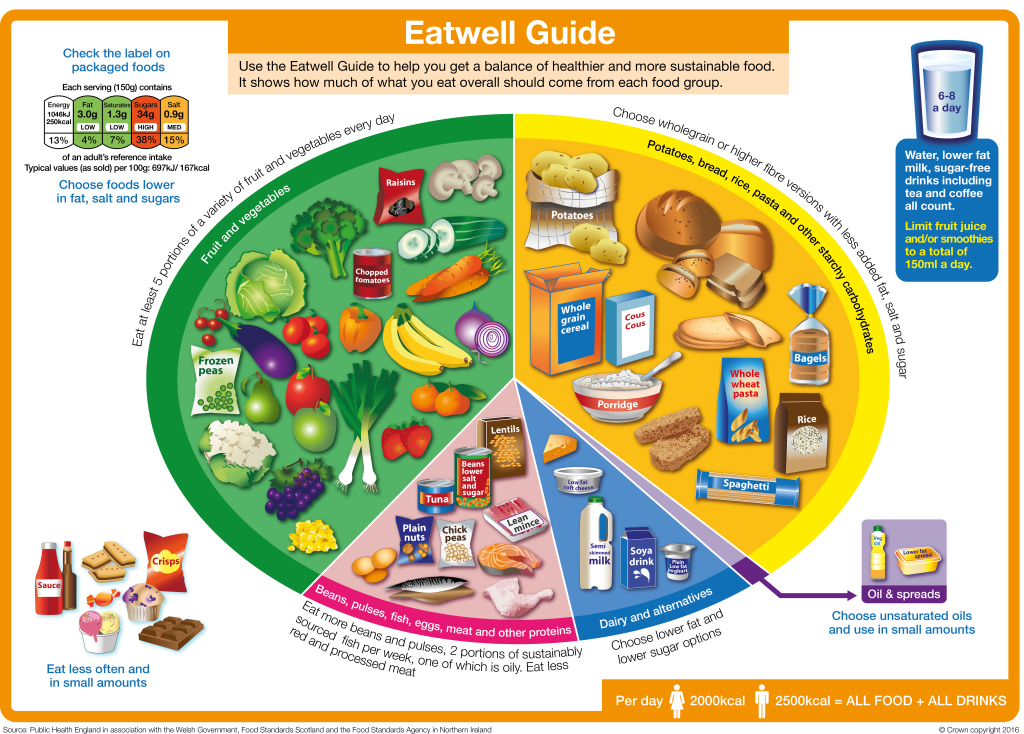Plant Based Sources of Calcium
Please note: This is general information and should not replace any personalised advice given to you by your healthcare team.
Why do I need calcium?
Calcium is the most abundant mineral in the body and has many functions. With around 99% of calcium deposited in bones and teeth, it is important for promoting the growth and maintenance of strong and healthy bones and teeth. It is also important for nerve and muscle function, blood clotting and the release of hormones.
Plant sources of calcium are readily available in a balanced diet and are also rich in vitamin K, potassium and vitamin C which help to keep bones healthy. However, it is important that a variety of calcium sources are consumed to avoid deficiency.
How much calcium do I need?
Our calcium needs will change at different stages throughout our life. The table below explains how much calcium our body needs depending on our age and gender.
Calcium needed (mg/day)
| Age | Male | Female |
| 0-12 months | 525 | 525 |
| 1-3 years | 350 | 350 |
| 4-6 years | 450 | 450 |
| 7-10 years | 550 | 550 |
| 11-18 years | 1,000 | 800 |
| Adults | 700 | 700 |
| Special requirements | |
| Breastfeeding mums | 1,250 |
| Women past the menopause | 1,200 |
| Coeliac disease | 1,000 at least |
| Osteoporosis | 1,000 |
| Inflammatory bowel disease | 1,000 |
| Postmenopausal women and men over 55 years | 1,200 |
Which foods contain calcium?
The majority of the population choose dairy products as the main source of calcium. However, calcium is abundant in a wide assortment of vegetables.
The ‘Eatwell Guide’ below shows how you can achieve a varied and balanced diet to meet your nutritional needs, including calcium containing foods. The ‘Eatwell Guide’ below shows how you can achieve a varied and balanced diet to meet your nutritional needs, including eating
foods that contain calcium.

Food sources containing calcium
Plant sources of calcium are readily available in a balanced diet. However, it is important that a variety of calcium sources are consumed to avoid deficiency. See below for the different quantities of foods that contain calcium.
Beans, pulses and other plant based protein sources (*cooked)
| Food choice | Portion size (28g = 1oz) | Calcium (mg) |
| Almonds | 6 whole | 24 |
| Baked beans, in tomato sauce | small tin (150g) | 78 |
| Brazils | 3 whole | 17 |
| Chickpeas* | 2 tablespoons (120g) | 55 |
| Hazelnuts | 25g | 35 |
| Hummus | 2 tablespoons (30g) | 12 |
| Kidney beans* | 2 tablespoons (120g) | 44 |
| Lentils* | 3 tablespoons (45g) | 7-10 |
| Peas* | medium portion (65g) | 23 |
| Sesame seeds | 1 tablespoon (15g) | 100 |
| Soya beans* | 2 tablespoons (120g) | 100 |
| Sunflower seeds | 1 tablespoon (15g) | 17 |
| Tahini paste | 1 heaped teaspoon (20g) | 136 |
| Tofu, firm, steamed/fried | 100g | 320-500 |
| Tofu, silken, steamed/fried | 100g | 150-200 |
| Walnuts | 3 whole (20g) | 19 |
Potatoes, bread, rice, pasta and other starchy carbohydrates
| Food choice | Portion size (28g = 1oz) | Calcium (mg) |
| Granary bread | 1 medium slice (35g) | 25 |
| White bread | 1 medium slice (30g) | 33 |
| Wholemeal bread | 1 medium slice (35g) | 19 |
| Porridge made with fortified non-dairy milk | Medium bowl (75g) | 105 |
| Muesli (50g) with 125ml fortified non-dairy milk | Medium portion | 200 |
| Toasted teacake | Average 85g | 83 |
| Pitta bread, white | Average 69g | 63 |
| Tortilla chips | Small bag (25g) | 38 |
Non-dairy milks and non-dairy alternatives
| Food choice | Portion size (28g = 1oz) | Calcium (mg) |
| Non-dairy milks, calcium fortified (almond, soya, coconut, oat) | 250ml | 250-300 |
| Soya yoghurt | Pot (150g) | 180 |
| Custard made with non-dairy milk | Medium portion (150ml) | 200 |
Fruit
| Food choice | Portion size (28g = 1oz) | Calcium (mg) |
| Apricots, dried | 3 medium (24g) | 18 |
| Blackberries | Handful (50g) | 20 |
| Blackcurrants | Handful (50g) | 30 |
| Clementines/satsumas (with peel and pips) | 1 average (80g) | 18 |
| Currants | 1 tablespoon (25g) | 23 |
| Dates dried and stoned | 4 medium (30g) | 14 |
| Figs, dried | 2 (40g) | 100 |
| Grapefruit | Half (120g) | 28 |
| Kiwi | 1 medium (60g) | 15 |
| Melon (cantaloupe, honeydew) | Average slice (150g) | 14-30 |
| Olives in brine | 6 medium (18g) | 11 |
| Oranges (with peel and pips) | Medium (100g) | 33 |
| Prunes, dried | 3 medium (30g) | 10 |
| Raisins | 1 tablespoon (30g) | 14 |
| Raspberries | Average portion (60g) | 15 |
| Sultanas | 1 tablespoon (30g) | 19 |
| Tangerines (with peel and pips) | 1 average (80g) | 25 |
Vegetables (*cooked)
| Food choice | Portion size (28g = 1oz) | Calcium (mg) |
| Asparagus* | medium portion (125g) | 30 |
| Beetroot, pickled | 5 slices (50g) | 10 |
| Broad beans* | 2 tablespoons (120g) | 67 |
| Broccoli* | 80g | 32 |
| Brussel sprouts* | medium portion (100g) | 20 |
| Cabbage* | average (100g) | 42 |
| Carrots* | medium portion (100g) | 25 |
| Celery | 1 stick (30g) | 12 |
| Green beans* | medium portion (100g) | 56 |
| Kale* curly boiled | 100g | 150 |
| Leeks* | 1 medium (160g) | 32 |
| Mixed veg, frozen, boiled | 90g | 32 |
| Okra* | 3 medium (15g) | 18 |
| Onion, raw | average (90g) | 23 |
| Potatoes, old baked in skin | Medium 200g | 22 |
| Potatoes, new boiled in skin | (average portion) 200g | 26 |
| Spring greens, boiled | 80g | 60 |
| Sweet potato, boiled | 130g | 30 |
| Watercress | ¼ bunch (20g) | 34 |
Nutrient levels vary according to food processing method, therefore please check the label of the brand you use.
How can I maximise my calcium status?
Eat adequate quantities of foods that contain calcium – refer to the food tables and see the example below for meal ideas.
Be more physically active – bones can be kept strong through weight-bearing exercise and the government recommendation is for 5 x 30 minute of moderate activity per week e.g. running and cycling as well as day to day activities such as walking, gardening and housework. Strength training is helpful to develop muscle size e.g. gym, Pilates and yoga and it can also preserve both health and protect against osteoporosis.
Limit salt intake – salt increases calcium loss from the body in urine.
Limit caffeine – caffeine found in tea, cola, coffee and high energy drinks inhibits calcium absorption.
How do I improve the absorption of calcium from my diet?
Our body requires vitamin D to help us absorb and use calcium efficiently. We make most of our vitamin D from sunlight. Try and expose your face and forearms (without sun cream) for around 20 minutes, three times a week between April and October. Be careful not to get sun burnt and avoid the sun in the middle of the day in the summer months. Other sources of vitamin D include:
- Spreads and margarines (most are fortified with vitamin D but check the label)
- Mushrooms (grown under ultra violet light)
- Fortified breakfast cereal
- Fortified milks.
From April to October most people can get all the vitamin D they need as mentioned above. However, during the autumn and winter it is difficult for people to get enough vitamin D from food alone. The Department of Health recommends that all adults and children over the age of one should consider taking a supplement containing 10 mcg (400IU) of vitamin D during this time. A daily supplement is recommended all year round for those who are at risk of low vitamin D levels including:
- All pregnant and breastfeeding women
- Babies and children up to the age of five years
- People aged 65 years and over
- People with darker skin
- People who are rarely exposed to the sun.
Do I need a supplement?
Food is the best source of all nutrients. However, for people following a very restricted diet, supplements of calcium may be recommended by your dietitian or doctor
Children
Babies and children up to one year of age who are not breast-fed will need a suitable milk-free infant formula as non-dairy milks are not nutritionally complete. Non-dairy milks that are enriched with calcium can be used once a child is over one year. Depending on the child’s diet it may be beneficial to continue with the milk free formula until at least 18 months of age and if a poor eater, until two years’ of age.
Rice milk should not be given to children under five years’ of age because of the levels of arsenic in this product.
How much calcium am I getting?
Check how much calcium you are getting by totalling up your intake of calcium rich foods on a typical day.
Meal ideas
Breakfast ideas
- Cereal/muesli with fortified non-dairy milk
- Porridge made with non-dairy milk topped with dried fruit
- Toasted granary bread with baked beans
- Fresh fruit with soya yoghurt, sprinkled with toasted almonds
- Pancakes with dried fruit, non-dairy yoghurt and no added sugar jam.
Lunch ideas
- Tomatoes and beans on toast
- Lentil and tomato soup with granary bread
- Walnut salad with jacket potato and soya cheese
- Hummus and toasted pitta bread with sliced cucumber and carrots
- Scrambled tofu on toast with tomatoes and mushrooms
- Bean pate on cracker breads with salad.
Main meal ideas
- Lentil rissoles with green beans, tomatoes and dressing
- Bean stew and dumplings with green vegetables
- Cannelloni filled with mixed beans, mushrooms, onions, tomatoes and topped with grated non-dairy cheese
- Roasted peppers stuffed with nuts and spinach, served with vegetable rice and fresh tomato sauce
- Chick pea curry and brown rice with salad
Snack/pudding ideas
Rice pudding or custard made with non-dairy milk with dried fruit
Non-dairy yoghurt or ice cream with stewed fruit
Baked apple stuffed with dates and nuts
Fruit scones with spread and jam
Apricot and apple crumble with non-dairy cream or ice cream
Fruit cake
For further information, please contact the Nutrition and Dietetic Department on 013015 254415 or email dietetic.secretary@dchft.nhs.uk
About this leaflet
Author: Sandra Hood, Dietitian
Written: August 2018
Approved: August 2018
Review date: August 2021
Edition: v1
If you have feedback regarding the accuracy of the information contained in this leaflet, or if you would like a list of references used to develop this leaflet, please email patientinformation.leaflets@dchft.nhs.uk
Print leaflet